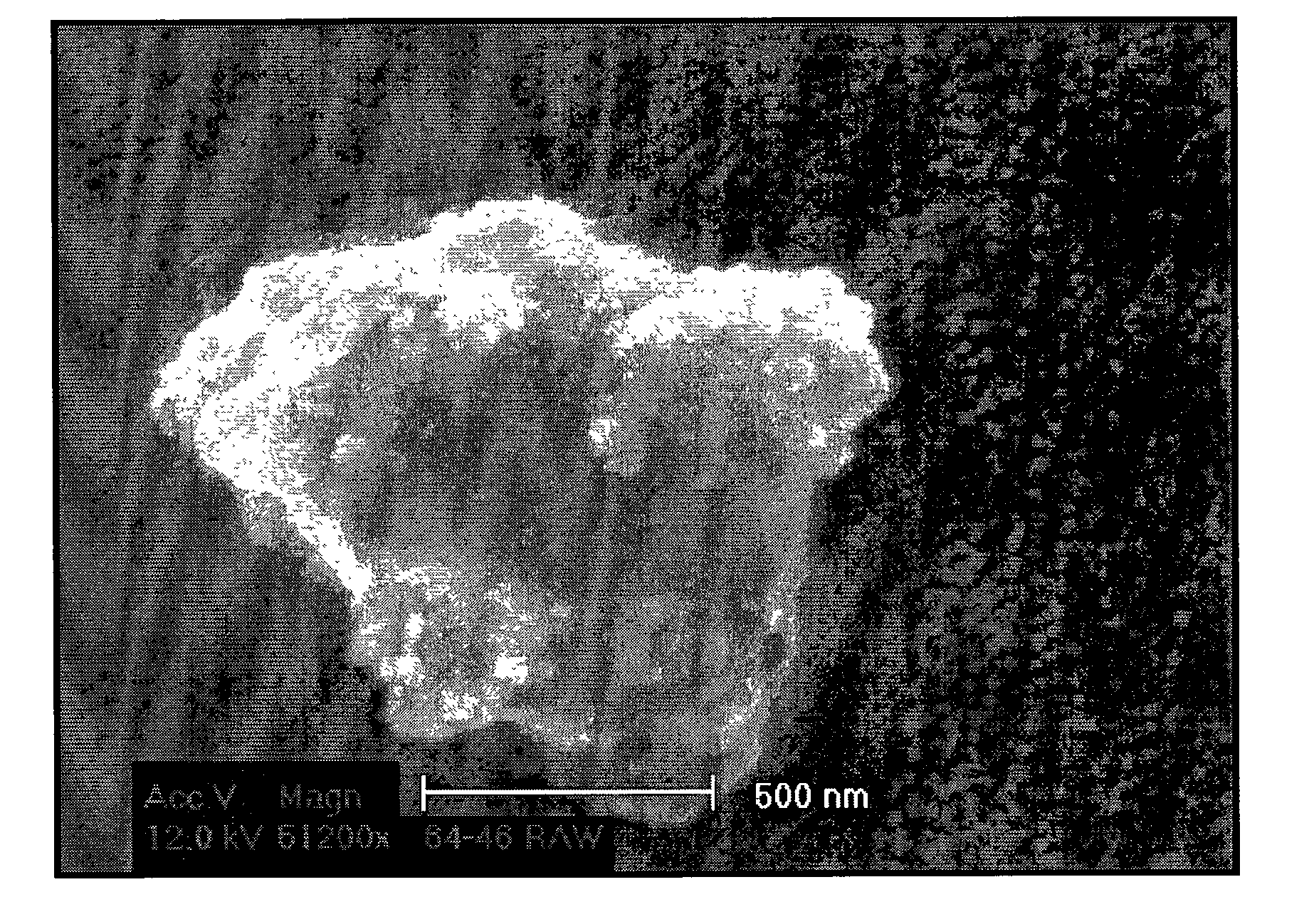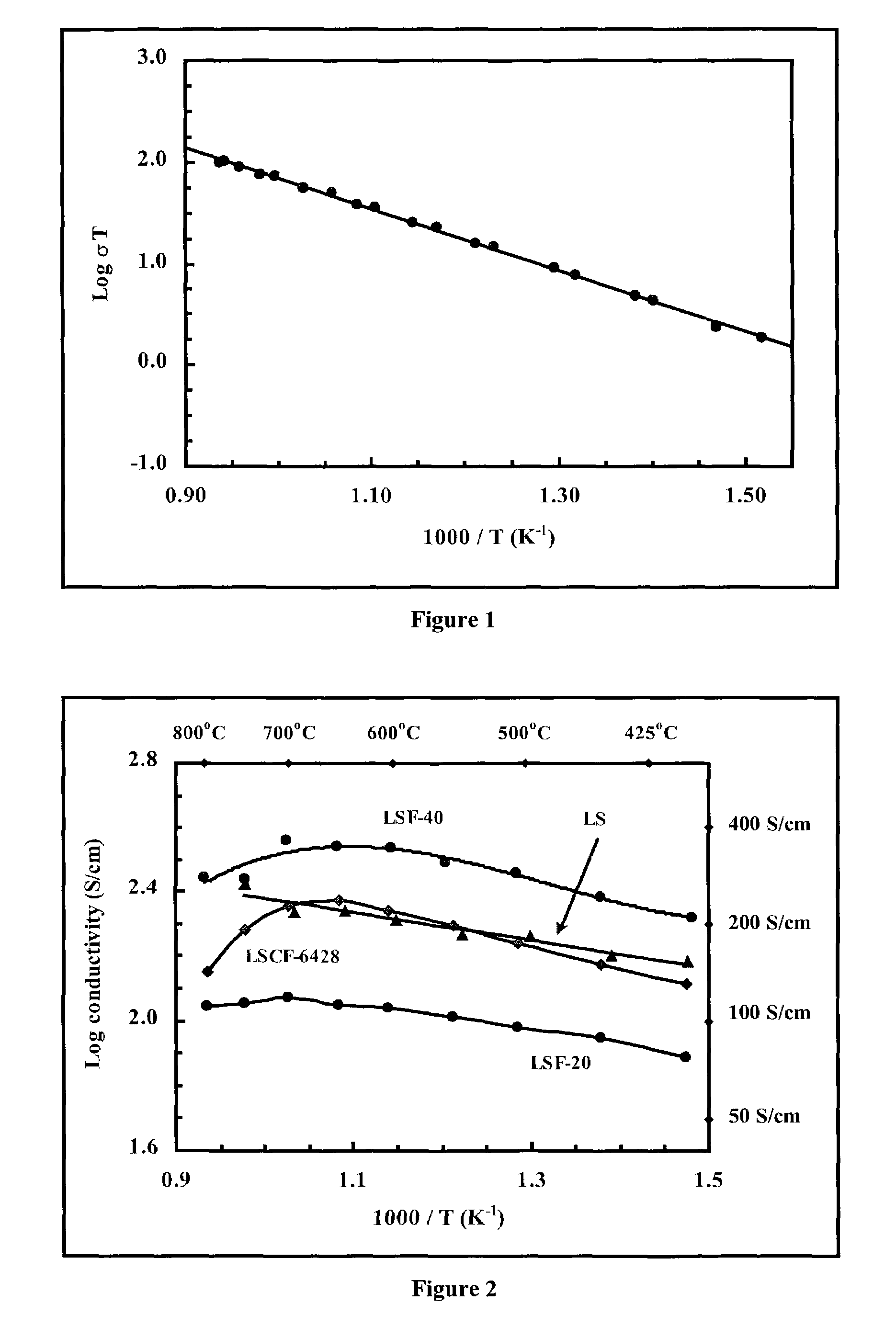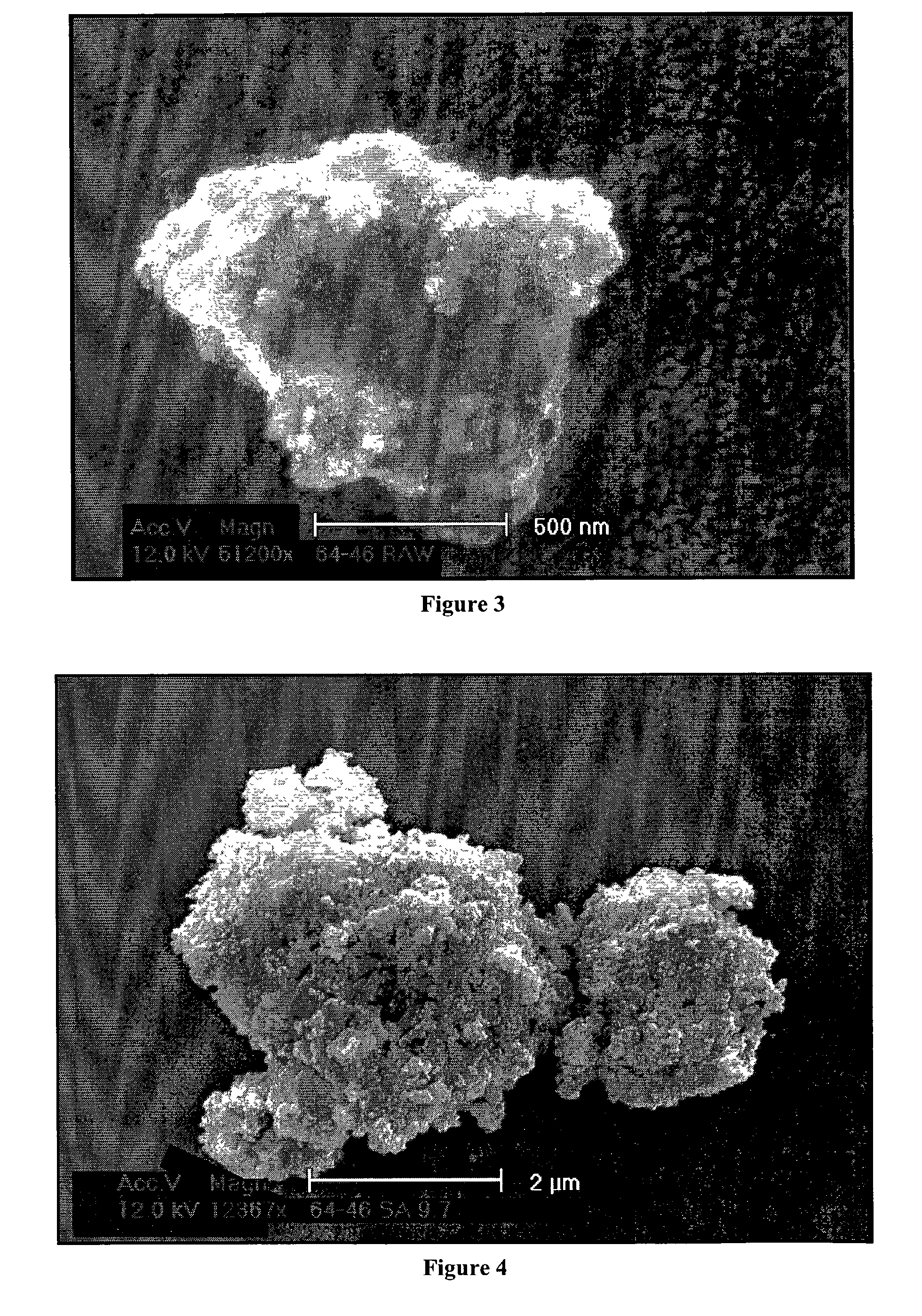Nano-composite electrodes and method of making the same
a ceramic electrode and nano-composite technology, applied in the field of ceramic electrode materials, can solve the problems of releasing polluting gases, affecting the performance of anodes of sofc, and affecting the efficiency so as to improve the performance reduce the operating temperature and improve the effect of solid oxide fuel cells
- Summary
- Abstract
- Description
- Claims
- Application Information
AI Technical Summary
Benefits of technology
Problems solved by technology
Method used
Image
Examples
example 1
[0055]This example described the preparation of a nanoscale yttrium-doped zirconia (YSZ) material that was used in the preparation of nano-composite anode formulations described in Examples 5-7 and 9-12. Multiple batches of nanoscale YSZ material were prepared to prepare these example anode formulations.
[0056]An aqueous suspension of nanoscale, crystalline YSZ (8 mol % Y2O3) powder was prepared by coprecipitation to form a hydrous zirconium-yttrium hydroxide precursor, followed by hydrothermal crystallization in an autoclave. A sample of this aqueous YSZ suspension was dried, and its measured surface area was 125 m2 / gram. The product YSZ suspension was subjected to cross-flow filtration to remove residual salts and to exchange the water solvent in the slurry with isopropyl alcohol. This IPA slurry of nanoscale YSZ powder was used to make nano-composite anode formulations, as described under Examples 5-6. Some of this IPA suspension was dried and the resulting nanoscale YSZ powder wa...
example 2
[0058]This example describes the processing of nickel oxide powder that was used for the preparation of nano-composite anode formulations described in Examples 6, 7, and 13. 1000 grams of as-received nickel oxide powder (GFS, Lot #L402162) was attrition milled for eight with about 2500 grams of 3-mm diameter YSZ media and about 150 grams of isopropyl alcohol. The attrition-milled slurry was collected, and additional IPA was added to reduce the solids content to about 50 wt %. A sample of this IPA slurry was dried, and the surface area of the milled NiO powder was 2.7 m2 / gram (compared to 0.5 m2 / gram for the NiO powder prior to milling).
example 3
[0059]This example describes the preparation of nanoscale gadolinium-doped ceria (GDC) material that was used for the preparation of nano-composite anode formulations described in Examples 13 and 14, and nano-composite cathode formulations of Examples 15-24. Multiple batches of nanoscale GDC material were prepared to prepare these example anode and cathode formulations. An aqueous suspension of nanoscale, crystalline GDC (10 mol % Gd2O3) powder was prepared by coprecipitation to form a hydrous cerium-gadolinium hydroxide precursor, followed by hydrothermal crystallization in an autoclave. The product GDC suspension was washed in water to remove residual salts, and then in isopropyl alcohol to exchange the solvent. The washing and solvent exchange was achieved by repeating the steps of centrifugation, decantation, solvent addition, and high-shear mixing. Two wash cycles were performed with water being added after decantation, and three cycles were performed with isopropyl alcohol bei...
PUM
| Property | Measurement | Unit |
|---|---|---|
| Temperature | aaaaa | aaaaa |
| Percent by volume | aaaaa | aaaaa |
| Percent by volume | aaaaa | aaaaa |
Abstract
Description
Claims
Application Information
 Login to View More
Login to View More - R&D
- Intellectual Property
- Life Sciences
- Materials
- Tech Scout
- Unparalleled Data Quality
- Higher Quality Content
- 60% Fewer Hallucinations
Browse by: Latest US Patents, China's latest patents, Technical Efficacy Thesaurus, Application Domain, Technology Topic, Popular Technical Reports.
© 2025 PatSnap. All rights reserved.Legal|Privacy policy|Modern Slavery Act Transparency Statement|Sitemap|About US| Contact US: help@patsnap.com



